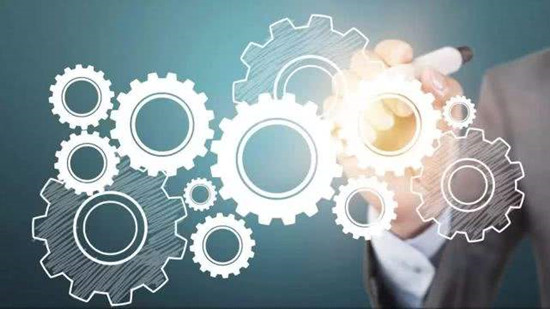What has a lithium-ion battery?
Oct 22, 2019 Pageview:1192
What devices use lithium-ion batteries?
Lithium-ion batteries are used for almost all electronic devices and electronic vehicles. Despite being more expensive than conventional alkaline batteries, lithium-ion batteries have a much longer lifespan.
Pacemaker devices
All implantable medical devices including pacemakers use Lithium-ion batteries that are specifically designed for them. They are called Lithium-iodide batteries. These types of Li-ion batteries are designed to last up to 15 years or even more according to the type of work, they will be performing.
Digital Cameras and Audio Devices
There is no digital camera today on the market that does not have a lithium-ion battery in it. Either a removable one or embedded one. The usage of Lithium-ion batteries in digital cameras has increased the number of photos that can be taken between every charge dramatically. The same thing goes for Audio devices and recorders, nowadays sound engineers can record and enhance the sound in video conferences and concerts using portable audio devices that can last up to 10 hours of continuous usage.
Smartphones and PDAs
A small version of the Lithium-ion batteries is used in all Personal Digital Assistants (PDAs) and Smartphones. There are now smartphones that can last up to two days of on-screen time. That is thanks to the huge development of Li-ion technology during the past decade.
Conventional and Smart Watches
Since Lithium-ion, batteries provide its users with a long lifespan. Many watch manufacturers are now using them in their watches. Instead of conventional batteries, they start to use 3-volt lithium-ion batteries. Moreover all smartwatches have Lithium-ion batteries inside. With capacities that can provide up to 45 days of running in some cases.
There are of course an increasing number of devices that use Lithium-ion batteries. Devices like thermometers, laser pointers, hearing aid devices, even calculators. Some experts stated that by the year 2022 almost all electronic devices would use Lithium-ion as their batteries.
What goes into a lithium-ion battery?
Lithium-ion batteries are made from what are called cells. Every cell of those is composed of three components; a positive electrode, a negative electrode, and a chemical component called an electrolyte between the positive and negative ones.
The positive electrode in the cell is designed from Lithium-Cobalt oxide. The negative electrode is designed from graphite. The electrolytes are such as oxides and sulfides. The electrolyte must have a long shelf life and offer high mobility for Lithium ions. The electrolyte can be liquid, polymer, and solid-state ones.
How does lithium-ion battery work?
Lithium-ion batteries have the same working mechanism. When the battery is being charged, the Lithium-cobalt oxide "the positive electrode", gives some of its lithium ions, these ions move throughout the electrolyte to the negative electrode "the graphite" and subside there. The battery during this process store energy. After the charging process and during discharging; the Lithium-ions move back across the electrolyte from the negative electrode to the positive once again, which in turn produces energy that powers up the device the battery is attached to.
Unlike conventional batteries, Lithium-ion batteries have built-in electronic controllers. These controllers regulate how the batteries charge and discharge. These controllers prevent overcharging and overheating that can cause Lithium-ion batteries to explode in some cases.
During the charging and discharging process in the Lithium-ion batteries, electrons flow in the opposite direction of the movement of the ions around the outer circuit. It is important to note that electrons do not flow throughout the electrolyte itself. The electrolyte is effectively an insulating barrier and it does not affect the movement of the electrons.
Ions movement throughout the electrolyte and electrons moving around the external circuit in the opposite direction are two interconnected processes. If either of these movements stops the other stops too. When the battery is completely discharged and ions stop moving through the electrolyte, the electrons stop moving at the same time through the outer circuit. That is why you lose power in your device.
Discharging happens at a large rate when the device powered by the Lithium-ion battery is on; however, discharge also occurs even when the device is powered off. That is one downside for the Lithium-ion batteries.
To summarize how Lithium-ion works, it is as follows:
· During charging, lithium ions flow from the positive electrode to the negative electrode throughout the electrolyte.
· Electrons also flow from the positive electrode to the negative electrode around the outer circuit.
· Electrons and ions combine together at the negative electrode and deposit lithium there.
· When no more ions are present to flow, the battery is then fully charged and ready to be used.
· During the discharging process, the ions flow back through the electrolyte. Flowing back from the negative electrode to the positive electrode. The electrons flow from the negative electrode to the positive one but throughout the outer circuit. This process is what provides power to your device.
When all of the ions inside the battery are moved back, then the battery is completely discharged and it needs to recharge once again.
- Prev Article: What happens when you puncture a lithium-ion battery?
- Next Article: What is the lifespan of a lithium-ion battery?
Leave Message
Hottest Categories
-
Hottest Industry News
-
Latest Industry News











